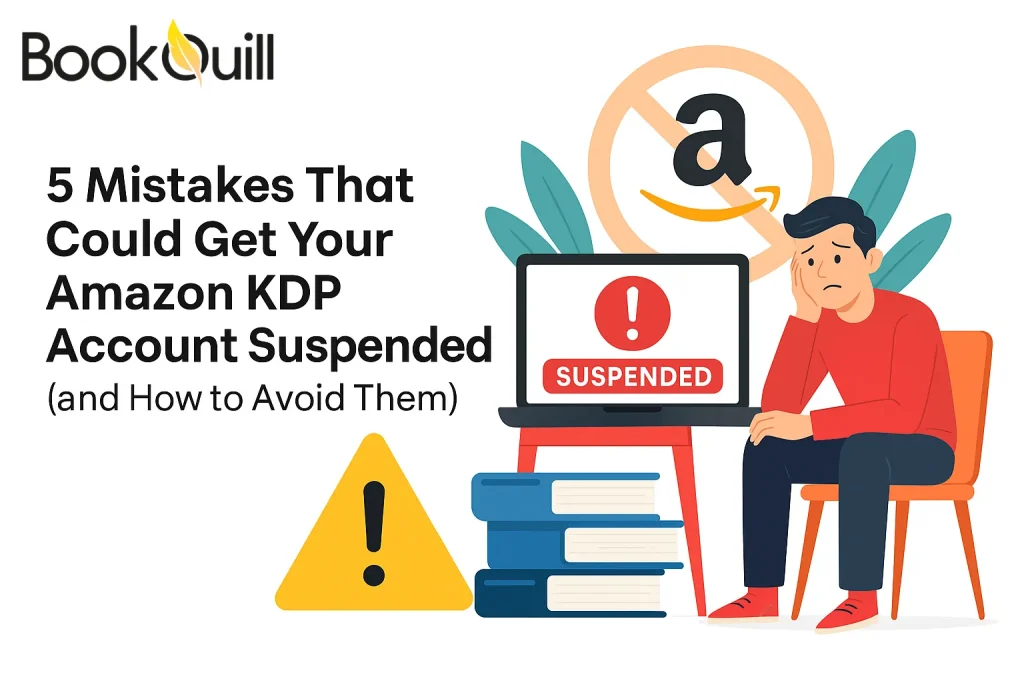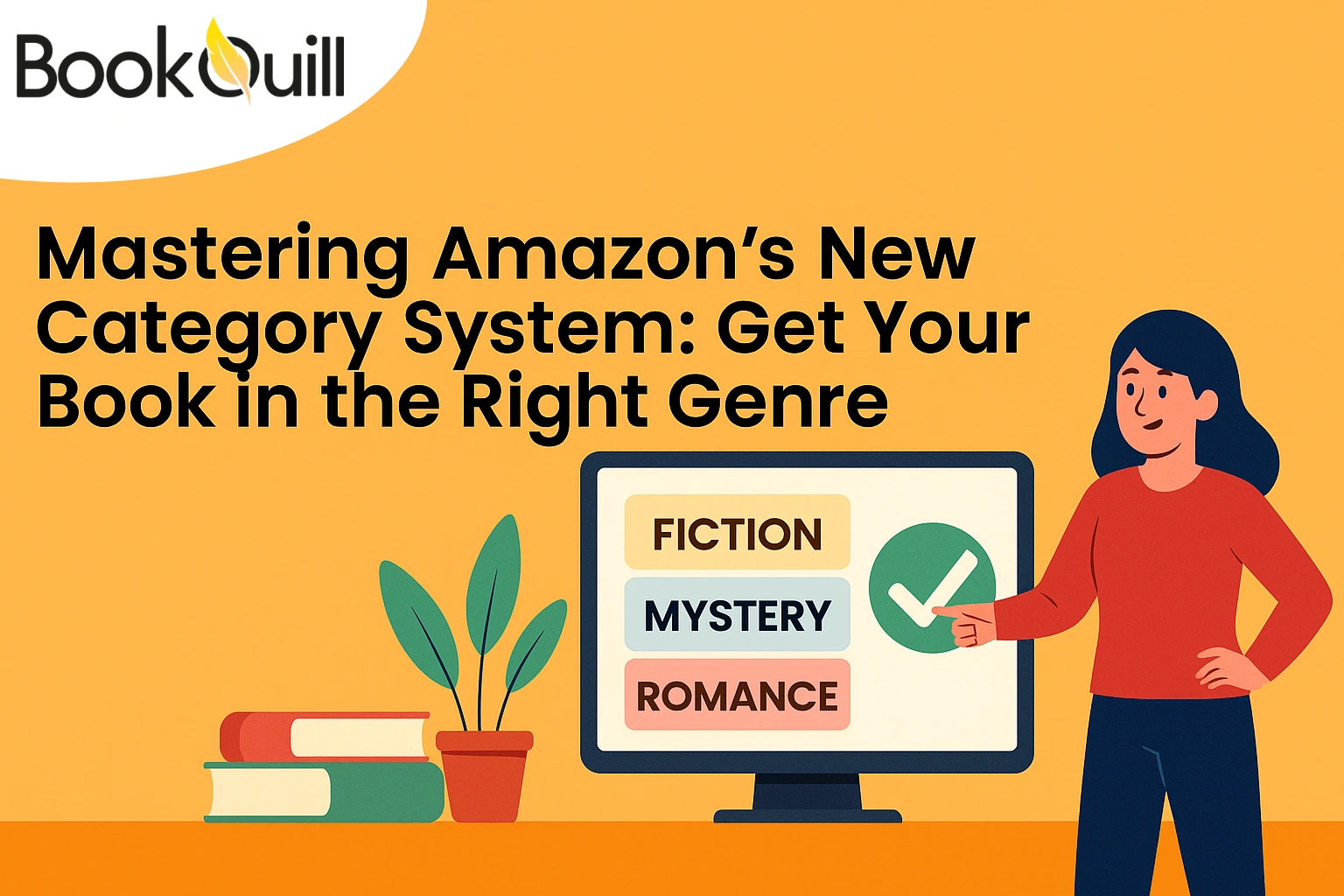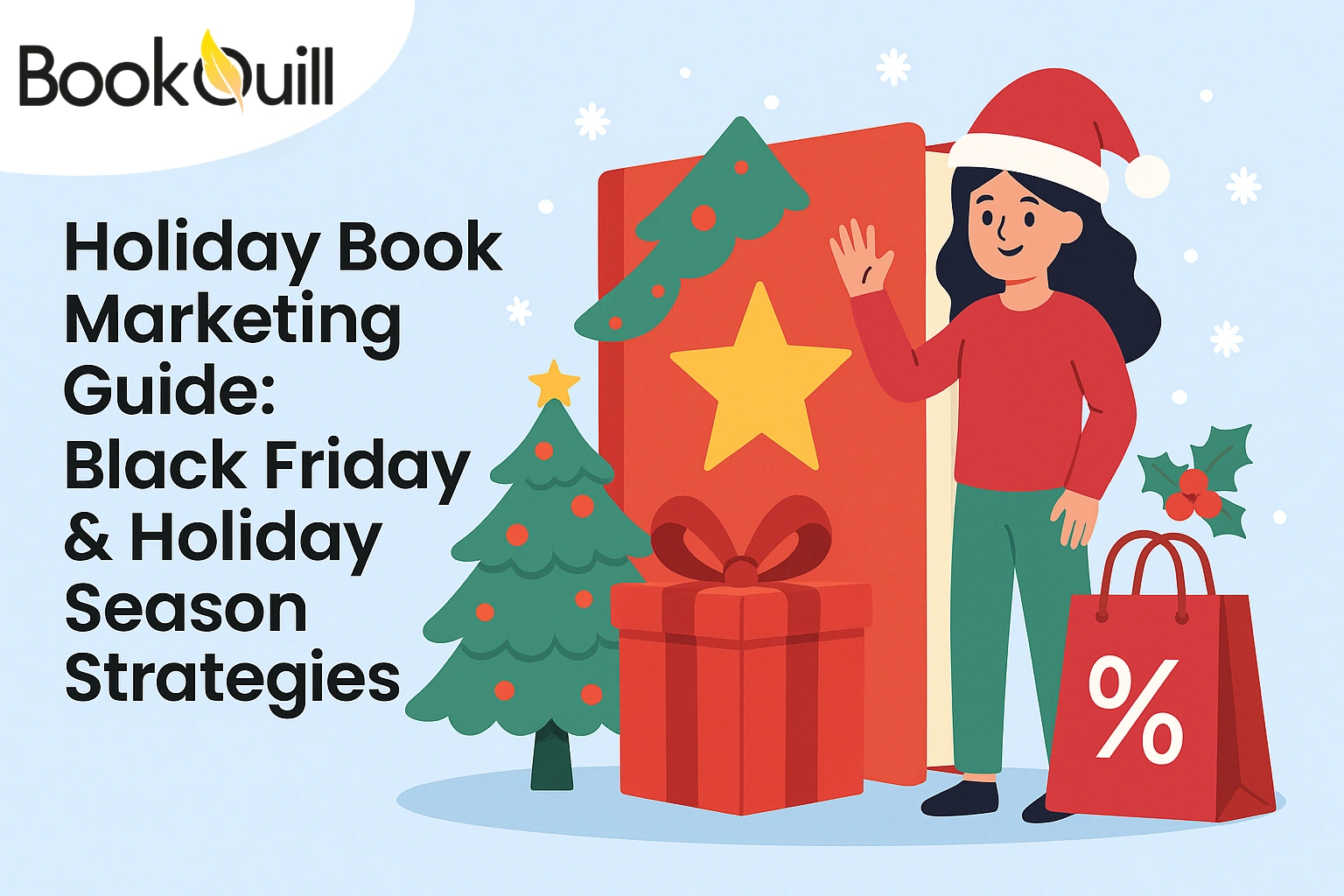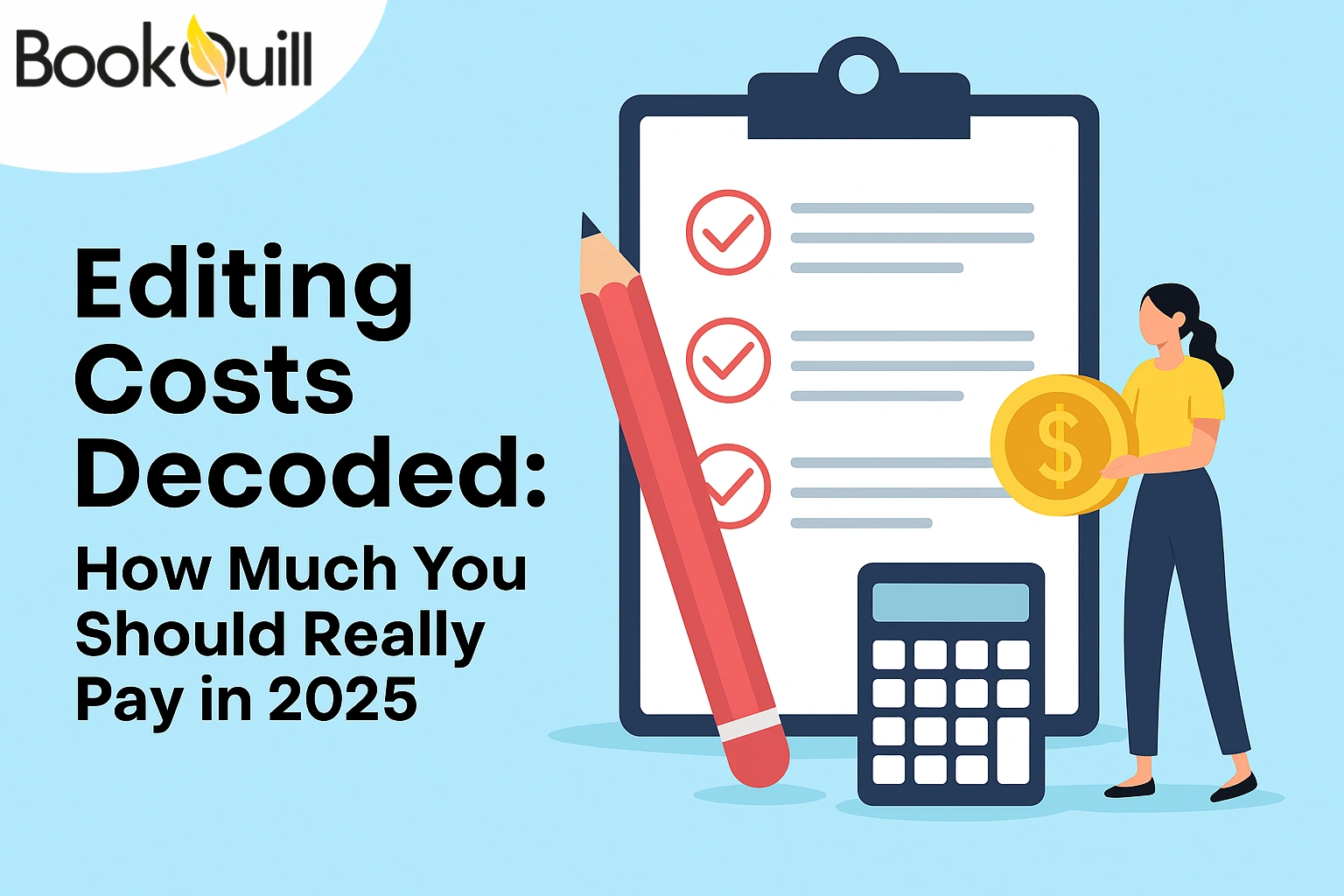Table of Contents
Explore Blogs
Trending on Ebook
5 Mistakes That Could Get Your Amazon KDP Account Suspended (and How to Avoid Them)

Why are KDP suspensions every author’s nightmare?
Imagine you have spent a year bent over your laptop, surviving on coffee and pounding the book of your dreams. Finally, it will be uploaded to Amazon KDP, the great publishing platform where anyone can turn their words into a book. You hit publish, exhale, and wait for the royalties to roll in. Then one morning, you open your inbox and see the feared subject line: “Your KDP Account Has Been Suspended.”
And that’s not just a bump in the road That’s Amazon wiping out your entire writing career overnight. Gone are your royalties, your dashboards, your book rankings, and your future publishing plans. Your readers vanish, your momentum dies, and all you’re left with is “What did I do wrong?”
The thing is, KDP Amazon doesn’t mess around. With millions of books uploaded, they have to guard against scammers, spammers, plagiarists, and rule-breakers. Unfortunately, that means even honest authors sometimes get caught in the crossfire. Maybe you unknowingly violated KDP guidelines. Maybe your metadata looked suspicious. Or maybe something else.
But wait! This is where this blog can help. We will walk you through what KDP suspension really means and how it differs from simple rejection, the five common mistakes that could get your KDP publishing Amazon account suspended, and, more importantly, show you how to avoid them like a pro.
So, buckle up. By the end, you’ll not only know what not to do, you’ll have a practical checklist for keeping your account safe.
Key Takeaways
- Amazon KDP suspensions are avoidable if you understand the rules and publish with care.
- Copyright and keyword misuse are the fastest ways to lose your KDP publishing Amazon account.
- Amazon spots manipulation instantly, and building reviews ethically beats gaming the system.
- The success of the Best Amazon e-book publishing service comes from avoiding low-effort or plagiarized books.
- Following KDP rules is the smartest way to thrive long-term with affordable Amazon book publishing.
What Is KDP Suspension and How Does It Differ from Book Rejection?
A mistake many first-time authors make is that they treat a KDP suspension the same way they treat a rejected book. But these two aren’t even in the same ballpark. One is a red flag on a single play, while the other is Amazon kicking you out of the whole stadium.
Let’s discuss it in more detail now.
Book Rejection is Like a Slap on the Wrist
When Amazon rejects a book, it usually means there’s an issue with that title only. Maybe your cover image doesn’t meet the KDP guidelines. Maybe your file formatting is a mess. Or maybe the title you chose contains trademarked terms.
In this case, you can fix the problem, re-upload, and get back in the game. Annoying? Yes. But career-ending? No, not at all!
Account Suspension Means the Whole Career on Pause
Suspension is way bigger. This means Amazon has pressed the big red button and frozen your entire KDP Amazon account. You can’t publish, can’t earn royalties, can’t even access the backend to check stats.
And if things go south, suspension can turn into a permanent ban, which means goodbye to years of hard work, reviews, rankings, and readers. Amazon doesn’t do second chances lightly.
The Levels of Amazon’s Wrath
🟡 Warnings: Amazon might send you an email pointing out an issue. This is your “friendly” push to fix things. Ignore it, and the stakes rise.
🟡 Temporary Suspension: Your account is frozen while they investigate. During this time, you’re at the midpoint. No publishing and no payouts.
🟡 Permanent Ban: The endgame. Your account is shut down, and often, you’re not allowed to open a new one.
Why Is Amazon So Strict?
On the surface, it feels harsh. But the reality is, Amazon is the world’s biggest bookstore. With millions of readers and millions of authors, their reputation depends on trust. If readers constantly ran into plagiarized works, fake reviews, or books that look like they were formatted by a monkey with a laptop, people would stop buying.
Amazon enforces rules to:
🟡 Protect readers from scams and poor-quality books.
🟡 Protect authors from copycats or unfair competitors.
🟡 Protect themselves from lawsuits.
So, when you hear “account suspension,” don’t think of it as Amazon being mean. Think of it as Amazon is protecting itself. You just need to make sure you’re not the kid who gets kicked out for throwing sand.
And fortunately, you can avoid all this drama by knowing what triggers a suspension in the first place. Which brings us to the top mistakes that have ended more authors’ careers than writer’s block ever could.
Mistake #1: Playing Fast and Loose with Copyright & Trademarks
If there’s one thing that can land you in KDP jail faster, it’s messing around with other people’s intellectual property. Amazon is strict when it comes to protecting copyrights and trademarks, and honestly? They have to be.
And many indie authors don’t even realize they’re doing something wrong until it’s too late.
The Common Culprits
🟡 Song Lyrics: Quoting even a single line from your favorite Taylor Swift song without permission? Sorry, that’s a copyright violation.
🟡 Celebrity Names: No, you can’t title your cookbook Brad Pitt’s Pancake Secrets. Names, likenesses, and brands are often protected.
🟡 Brand Mentions: Even writing “Starbucks” into your subtitle can cause problems if Amazon thinks you’re trying to profit off their trademark.
🟡 Cover Images: That cool dragon image you found on Google? It’s not “free to use.” Unless you own the rights or it’s licensed stock art, it’s a lawsuit waiting to happen.
Why Amazon Cracks Down
Copyright is a legal issue. Amazon doesn’t want lawsuits, and they don’t want their store full of copycats. That’s why they’ll pull your book, or your whole account, if they detect infringement.
And they don’t play detective gently. Amazon uses automated bots that wash your metadata, descriptions, and even content for red flags. One misplaced lyric or brand name, and you could get flagged instantly.
Example
I once knew an author who self-published a romance novel with a subtitle that included the word “Disney” (her heroine was a big fan). Within 48 hours, Amazon had pulled the book. Not just that, they sent her a warning that her KDP publishing Amazon account was under review. One word cost her months of work.
Another case is when an author copied a few motivational quotes from a famous book, thinking they were “common knowledge.” Amazon suspended the account until she could prove she had permission.
How to Avoid This Trap
🟡 Do Your Homework: Check if names, titles, or phrases are trademarked. A quick search on the U.S. Patent and Trademark Office site can save you a world of pain.
🟡 Use Licensed Content: Stock image sites are your friends. Free sites like can work too, but always check the license.
🟡 Stick to Public Domain: Works published before 1929 are generally safe (as of 2025), but double-check because laws vary by country.
🟡 When in Doubt, Rewrite: Instead of saying “Starbucks coffee,” say “a fancy latte.” Your readers will get it, and your account will be safe.
Mistake #2: The Keyword Stuffing Olympics
If you’ve ever seen a book title that looks like someone just dumped a thesaurus into it, congratulations, you’ve spotted keyword stuffing in the wild. Example: “Best Romance Mystery Thriller Suspense Book Ever with Love Triangle, Enemies to Lovers, and a Vampire Billionaire Cowboy.”
It sounds ridiculous, right? But you’d be shocked how many authors try this, convinced it’ll trick Amazon’s search engine into ranking them higher. Instead, it usually does the opposite, not to mention it makes readers roll their eyes so hard they can see their own brains.
What Keyword Abuse Looks Like
Keyword stuffing happens when authors overload their titles, subtitles, or book descriptions with unnecessary, repetitive, or misleading keywords. Instead of helping readers find the book, it makes the content unreadable.
🟡 Bad title: Best Self-Help Anxiety Depression Mindfulness Stress Relief Meditation Book for Beginners
🟡 Good title: Mindful Moments: A Beginner’s Guide to Managing Anxiety
See the difference? One looks like spam, while the other looks like an actual book you might want to read.
Why Metadata Manipulation Is a Big Deal
Amazon’s search algorithm is powerful, but it’s not dumb. When you try to game the system, Amazon flags it as manipulation. And since millions of readers trust Amazon to recommend quality books, they’re strict about cutting down anything that feels scammy.
On top of that, keyword stuffing can make your book look cheap and unprofessional. If your title screams desperation, readers won’t trust that the inside pages are worth their time.
Example
I once worked with an independent author who thought she’d outsmart the system by stuffing every hot romance keyword she could find into her subtitle. Her book launched…and disappeared within a week. Why? Amazon flagged the metadata and warned her that one more offense could mean account suspension. Months of work vanished faster than her book ever ranked.
Best Practices: How to Win Without Cheating
🟡 Keep Titles Clean: Titles should be memorable. Use keywords sparingly and naturally.
🟡 Use the Backend Keywords: Amazon gives you seven keyword slots in your dashboard for a reason. That’s where you can add extra terms.
🟡 Be Honest: If your book is a mystery, don’t write “Stephen King-style thriller” into your description just to get clicks. Readers will feel tricked, and Amazon will notice.
🟡 Focus on Relevance: Ask if this keyword actually describes my book. If not, leave it out.
If you want a smarter way to research keywords, tools like Publisher Rocket can help. It’s designed to show you what readers are actually searching for on Amazon, how competitive those keywords are, and which ones are worth targeting. Instead of guessing (and risking suspension for metadata abuse), you can build a strategy based on real data.
Mistake #3: Publishing Low-Quality, Plagiarized, or AI-Dumped Content
Amazon wants readers to trust the books they’re buying. If your book looks like it was pieced together during a three-hour Red Bull binge or worse, scraped from someone else’s hard work, Amazon will not hesitate to shut you down.
Lately, with the rise of AI content mills and quick-cash scammers, KDP Amazon has become even stricter. That means even honest indie authors need to be extra cautious.
The Rise of “Content Farms”
If you’ve browsed Amazon lately and thought, “Why are there ten versions of this exact same cookbook?” Welcome to the world of content farms. These are people uploading mass-produced and low-quality books just to flood the market.
Some even churn out entire books with unedited AI, hoping to make fast money. The problem is that readers complain, reviews fall, and Amazon’s reputation suffers. So, Amazon’s bots are on high alert, scanning for spam uploads.
Why Amazon Bans This
Low-quality or plagiarized books hurt everyone:
🟡 Readers lose trust in the platform.
🟡 Legit authors lose sales because scammy books fill the marketplace.
🟡 Amazon risks lawsuits when plagiarized work slips through.
That’s why uploading garbage content is one of the fastest routes to suspension.
Plagiarism: The Silent Career Killer
Even accidental plagiarism can get you in trouble. I have seen authors copy a few motivational quotes without attribution, thinking they were “common knowledge.” Amazon’s system doesn’t care. If it looks copied, you’re flagged.
And don’t think you can outsmart Amazon’s bots. They scan everything. If your content closely matches another published work, you’re toast.
The AI Dumping Problem
AI writing tools can be great helpers, especially for brainstorming, outlining, and even smoothing rough drafts. However, dumping unedited AI-generated content into KDP publishing on Amazon is a one-way ticket to suspension. Readers know when a book sounds robotic. And so does Amazon.
How to Avoid This Trap
🟡 Invest in Editing: Every book deserves a human touch. Typos and clunky sentences are forgivable in a first draft, not in a published book.
🟡 Fact-Check Everything: Especially for non-fiction. Readers love calling out errors, and Amazon doesn’t like refund requests.
🟡 Use Plagiarism Checkers: Tools like Grammarly or Copyscape help you catch unintentional overlaps.
🟡 Treat AI as a Tool, Not a Replacement: Think of it like a calculator. Helpful, but you still need to know the math.
Mistake #4: Running Multiple Accounts or Gaming the Review System
If Amazon has one mortal enemy, it’s manipulation. And nothing yells manipulation louder than running multiple accounts or trying to trick the review system.
Multiple Accounts: Why One Is Enough
Some authors think they’re being clever by opening more than one KDP Amazon account. Maybe one for their pen name, another for their sci-fi pen name, and a “backup” just in case. However, Amazon doesn’t allow that. Unless you have explicit written permission, you’re supposed to manage everything under a single account.
From Amazon’s perspective, multiple accounts look suspiciously like fraud. Why? Because scammers use them to mix up low-quality books under different identities, especially after one account gets banned. If you’re caught, Amazon won’t just suspend your accounts; they’ll likely terminate all of them at once.
The Review Manipulation Temptation
Reviews are gold. A book with 200 glowing reviews looks more legit than one with two. And in the competitive publishing world, the temptation to “push” that number can be strong.
But here’s the catch:
🟡 Buying fake reviews is a huge no-no.
🟡 Swapping reviews with other authors can backfire.
🟡 Even asking friends and family for reviews can be risky if Amazon notices patterns.
Amazon has advanced detection systems that track IP addresses, suspicious review timing, and phrasing similarities. If it looks like you’re gaming the system, Amazon will treat it as fraud.
Example
I once knew an author who paid a shady “review service” to pump up their new thriller with five-star ratings. Within two weeks, Amazon wiped every single one of them and suspended the account for “review manipulation.” That author didn’t just lose reviews. They lost their publishing income, too.
How to Avoid This Trap
🟡 Play the Long Game: Earn reviews organically. Ask real readers at the end of your book to leave feedback.
🟡 Use Legit Marketing: Newsletter swaps, ARC teams, and marketing services can help you reach actual readers without breaking rules.
🟡 Stay Transparent: If you give someone a free copy in exchange for an honest review, make sure they disclose it (FTC rules apply).
Mistake #5: Ignoring Pricing, Promotion, and KDP Select Rules
Most indie authors don’t set out to break KDP guidelines on pricing or promotions. It usually happens because they skimmed over the fine print.
But ignorance doesn’t protect you. Amazon enforces these rules hard.
Where Authors Go Wrong
1- Breaking KDP Select Exclusivity: When you enroll in KDP Select, you’re agreeing that your eBook will only be available on Amazon for the 90-day period. That means no uploading it to Apple Books, Kobo, or even giving away PDFs on your website. Break this rule, and Amazon may suspend your account.
2- Misusing Promotions: Ever see an author run “permanent free” promotions outside of Amazon’s approved Free Book Promotions or Kindle Countdown Deals? That’s a violation. Amazon wants control over discounts.
3- Pricing Outside Allowed Range: Amazon has strict minimum and maximum price ranges, especially if you want that coveted 70% royalty rate. Set your price too low (or too high), and Amazon can flag it.
4- Kindle Unlimited Shenanigans: Some authors try to artificially inflate KU page reads (e.g., by stuffing books with filler content to boost page count). Amazon tracks this, and the penalties can be severe.
Why Amazon Enforces This
Amazon isn’t just being picky for fun. They want consistency across their marketplace, fair play for authors, and a smooth experience for readers. If one author breaks the system, it hurts the whole platform.
It’s just like Monopoly. Everyone has to play by the same rules, or the game falls apart.
Example
An author once decided to distribute their KDP Select-enrolled book on their personal blog “just for their email subscribers.” Amazon’s bots caught it, and within days, their account was suspended. One tiny “bonus” offer cost them thousands in lost royalties.
How to Stay Compliant
🟡 Read the Terms: Yes, it’s boring. But it matters.
🟡 Use Amazon’s Built-In Tools: Stick to the official Free Book Promotions and Kindle Countdown Deals.
🟡 Plan Your Strategy: If you want to go wide (multiple platforms), don’t enroll in KDP Select. If you want exclusivity benefits, play by the exclusivity rules.
🟡 Track Your Pricing: Double-check your royalty options before publishing.
What to Do If Your Account Gets Suspended
Okay, so let’s say you didn’t dodge the landmines. One morning, you open your inbox and see Amazon’s infamous email: “We are terminating your KDP Amazon account due to a violation of our policies.”
Step 1: Read the Email Carefully
Amazon will usually tell you why you were suspended, maybe because of copyright infringement, metadata issues, multiple accounts, etc. Don’t skim. Every word matters. Sometimes the problem is something you can fix quickly.
Step 2: Gather Your Evidence
If you believe the suspension was a mistake, you’ll need to back up your claim. For example:
🟡 Did Amazon think your cover image was stolen? Show proof of your stock license.
🟡 Did they flag your title for trademark use? Show research that the term is generic.
🟡 Did they think you had duplicate accounts? Provide documentation that it’s all under one name.
Step 3: Contact KDP Support (Professionally)
This is not the time for all-caps emails. Amazon’s support team responds much better to calm, respectful, and evidence-based appeals. Be concise, explain the situation, and attach proof.
Step 4: Fix What You Can
If the issue is legitimate (say, you really did include a Taylor Swift lyric), own up and correct it. Remove the offending content, adjust your metadata, or withdraw the book. Showing Amazon you’re willing to comply goes a long way.
Step 5: Prepare for the Waiting Game
Amazon doesn’t move fast. Reviews can take days or even weeks. During this time, keep writing, revising, or even planning your next project. Don’t just sit in despair.
Step 6: Learn and Future-Proof
Even if you win your appeal, treat it as a wake-up call. Go back, review the KDP guidelines, and tighten up your publishing process. Sometimes, what feels like a setback can actually sharpen your skills for the long run.
To Wrap Up
Getting suspended on KDP Amazon isn’t just about losing access to a dashboard; it’s more about risking your entire author career.
And honestly, most suspensions aren’t freak accidents. They’re avoidable mistakes. Copyright slip-ups, keyword stuffing, spammy content, multiple accounts, or broken pricing rules all boil down to one thing: ignoring the rules Amazon has set.
But fortunately, you don’t have to live in fear of the suspension hammer. When you understand the rules, you gain freedom. Freedom to write boldly. Freedom to market creatively. Freedom to focus on building your readership without worrying if tomorrow’s email from Amazon will end it all.
So, remember to publish with intention. Respect the KDP guidelines. Learn from the authors who’ve stumbled, and avoid making the same five mistakes yourself.
If you are still unsure or confused, you can come to us; we provide the best Kindle Amazon publishing service. And we don’t just stop at publishing, we even help you in editing and even writing your books under your very own name.
Don’t be hard on yourself. Reach out to us today!
Frequently Asked Questions
What is KDP Amazon, and why can accounts get suspended?
KDP Amazon is Amazon’s self-publishing platform, and accounts can be suspended for breaking guidelines like copyright, metadata abuse, or review manipulation.
What happens if I break KDP Select exclusivity rules?
Violating exclusivity can result in lost royalties or even account suspension, so always respect the program’s terms.
What is the Best Amazon print-on-demand service for indie authors?
The built-in KDP platform is considered the best print-on-demand service because it integrates directly with Amazon’s marketplace and global distribution.
How do I choose the Best Amazon eBook publishing service?
The best eBook publishing service is one that offers smooth formatting, strong distribution, and compliance with KDP guidelines for long-term success.
Is there a difference between the Best Amazon e-book publishing service and KDP?
No, KDP is Amazon’s official and best publishing service for eBooks, trusted by self-published authors worldwide.
Affiliate Disclosure
Note: Some of the links in this post are affiliate links. This means if you click on them and make a purchase, we may earn a small commission at no extra cost to you. We only recommend products and services we genuinely trust and believe will be useful to our readers. Your support helps us continue creating honest, helpful guides like this one. Thank you!
About Author
Hi, my name is Zachary Stone I’m a book marketing nut — or, as I like to call myself, a “Shelf Marketer.” No, I don’t sell wooden shelves; I market the books that are left forgotten on them. If you want your book to be the next bestseller, I am your go-to person. I am here to remind you that it’s not just about writing a great story — it’s about building a buzz among people with great campaigns.




